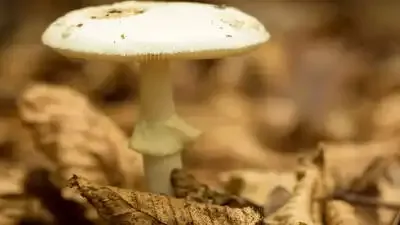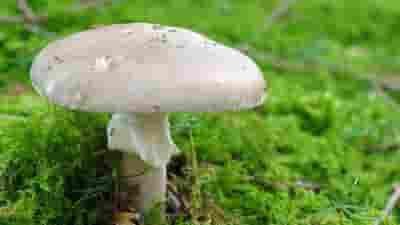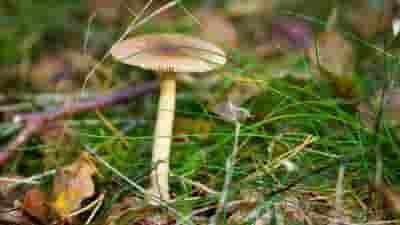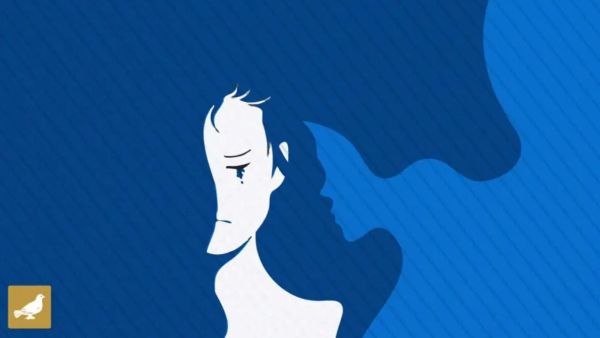
As rainfall and cooler weather blanket parts of New South Wales and South Australia, health authorities are issuing a serious warning: stay away from wild mushrooms. The alert comes after an uptick in sightings of one of the world’s most poisonous fungi—the death cap mushroom—with recent detections in Sydney, the southern highlands, other areas of southern NSW, and the Adelaide Hills.
Children are especially at risk, and experts are urging extreme caution. “They’re usually associated with the roots of oak trees and exotics, as well as cooler areas,” said Professor Brett Summerell, chief scientist at the Botanic Gardens of Sydney. “In Sydney, we’ve found them in areas with established trees.”
What is a death cap mushroom?
Death cap (Amanita phalloides) is a deadly poisonous mushroom from the Amanita genus. Originally native to Europe, it was first confirmed in Australia in the 1960s in Canberra, with later discoveries in Melbourne during the 1970s. Since then, it has spread to Asia, Africa, and the Americas—likely by hitching rides on imported tree roots.
This mushroom is infamous for its lethal nature, being responsible for 90% of mushroom-related deaths globally.

How to recognize a death cap
One of the death cap’s most dangerous traits is its resemblance to edible mushrooms. Many who fall ill mistake it for field mushrooms (Agaricus campestris) or the popular paddy straw mushrooms (Volvariella volvacea).
Key characteristics to look out for:
Cap: 4–16 cm wide; greenish-yellow, brown, tan, or rarely white with potential metallic sheen
Gills: White, closely spaced, and not attached to the stalk
Stalk (Stipe): White or yellowish, 4–18 cm tall with a distinctive ring and bulbous base (volva)
Flesh: White, does not change color when cut
Spore print: White
Odor: Mild and pleasant when young; foul as it ages
To the untrained eye, they’re nearly indistinguishable from edible varieties sold in supermarkets.
Where and when they grow
Death cap mushrooms (Amanita phalloides) are native to Europe and are now found in many parts of the world, including North America, Australia, and parts of Asia. They typically grow in association with trees, forming a symbiotic relationship called ectomycorrhiza, particularly with oak, beech, chestnut, birch, and some conifers like pine and spruce.
NSW Health has not disclosed precise locations to discourage public foraging. However, in 2023 alone, 23 people were hospitalized in NSW and the ACT due to mushroom poisoning—including two children under five.
Symptoms of death cap poisoning
The real danger lies in the delayed onset of symptoms—usually appearing 6 to 24 hours after ingestion—which can prevent victims from linking their illness to the mushrooms. Symptoms include nausea, vomiting, diarrhea, and abdominal cramps.
While initial discomfort may seem to pass, the toxins continue to cause devastating damage to the liver and kidneys. The momentary relief often delays medical treatment, increasing the risk of organ failure, coma, and death.

The mushroom contains three major toxins—amatoxins, phallotoxins, and virotoxins—that are not destroyed by cooking, freezing, boiling, or drying. Just half of one mushroom can be enough to kill an adult.
What to do if you have death cap mushroom poisoning
According to WebMD, diagnosing death cap poisoning can be tricky because its early symptoms mimic other illnesses and may briefly improve, giving a false sense of recovery.
If you’ve consumed wild mushrooms and develop any of the above symptoms, immediately call your local poison control center and seek emergency medical attention. Be sure to alert doctors that you recently ate wild mushrooms, and if possible, bring a sample of the mushroom with you to assist in diagnosis and treatment.
Early treatment is crucial. The goal in the early stages is to stabilize the patient and minimize toxin absorption. Treatment may involve:
Pumping the stomach
Activated charcoal to bind toxins
Surgical removal of mushroom fragments
IV fluids and electrolyte management
In severe cases—particularly when liver damage is advanced—a liver transplant may be the only life-saving option.
-
UP: Ambulance driver molests nurse, drags her by hair at private hospital

-
England Recover Through Pope's Heroics, Trail India By 262 Runs

-
'Unjust War Imposed On My People': Iran FM Calls For International Action At UN Human Rights Council

-
Israel Preparing For Possibility Of Lengthy War With Iran As Middle East Crisis Deepens: Report

-
Royal Family LIVE: Royals rush to wish William Happy Birthday as new pic shared
